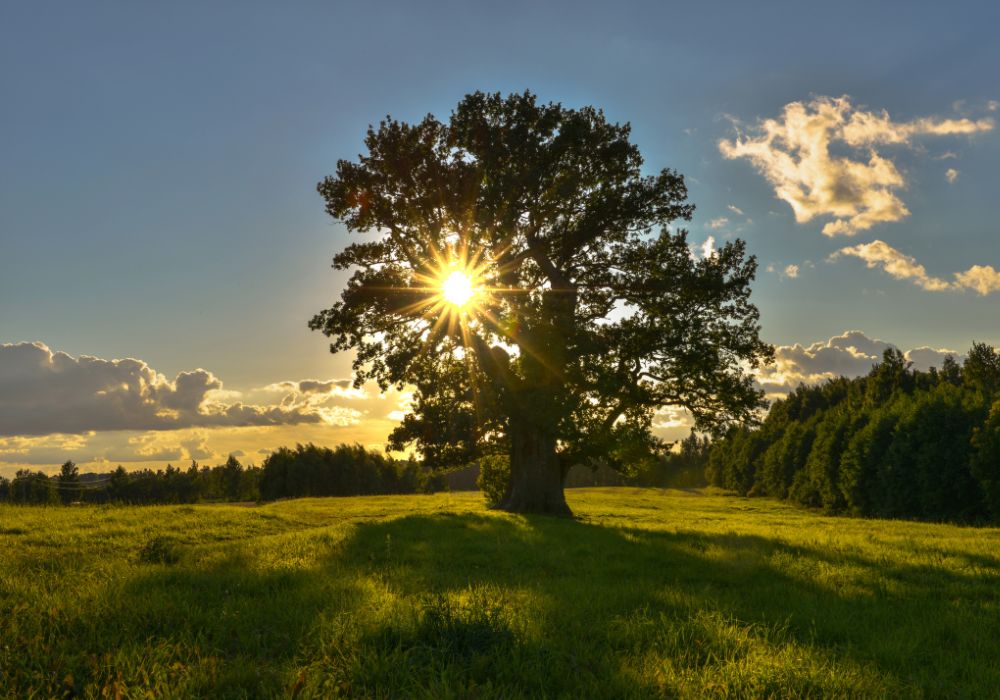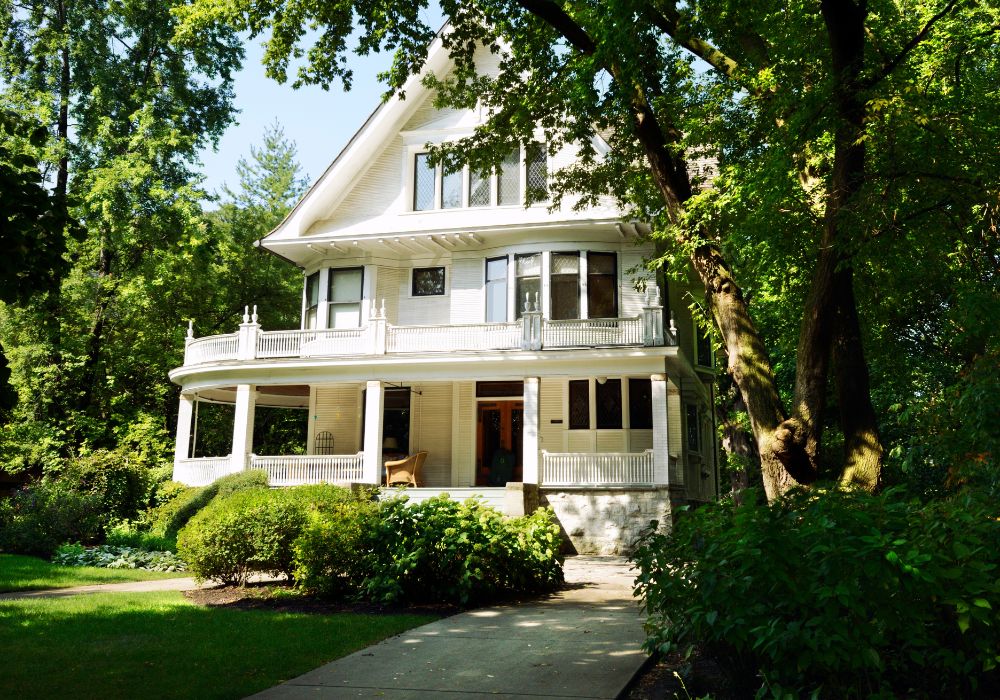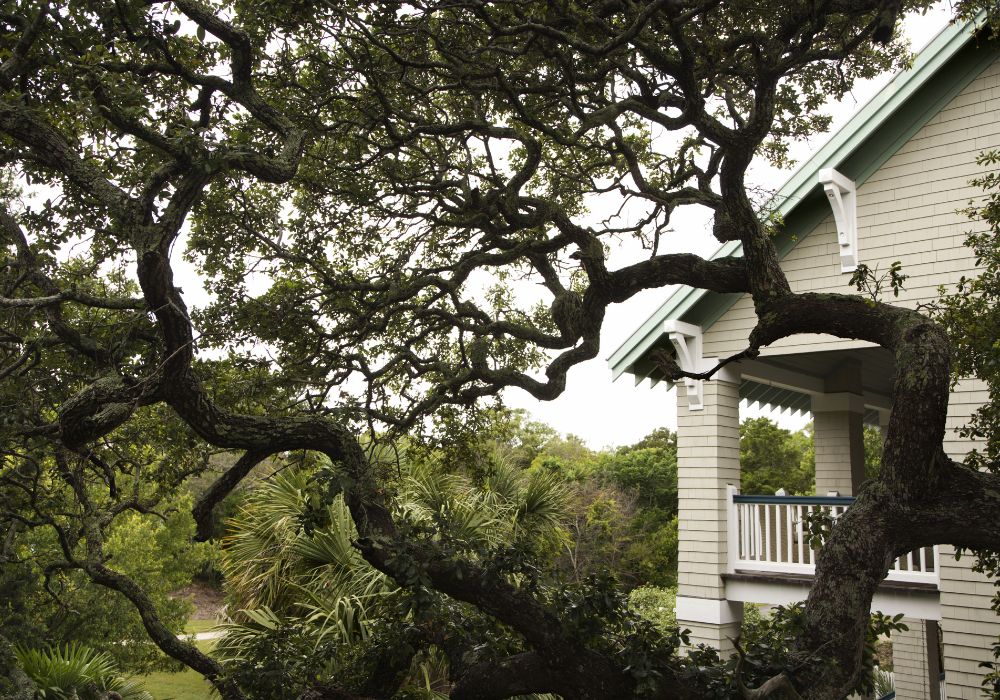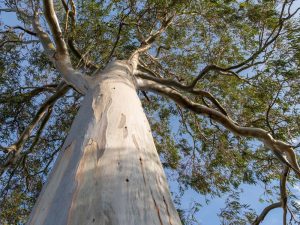
Oak trees serve purposes beyond mere yard decoration. They give wildlife a home, shade, and help improve air quality. Whether they are decades old or just planted, caring for these trees requires knowledge of their particular needs.
From correct watering and pruning to guarding your oak tree from pests and disease, following the correct guidelines guarantees years of thriving for your tree. Your oak trees will remain robust and vivid in your garden if you follow this guide, preserving their health and lifetime.
Understanding the Importance of Oak Trees
Contents
Maintaining the harmony of any garden depends much on oak trees. They offer shade, which helps control temperature and soil moisture so other plants can find a suitable habitat. Their thick canopy supports diversity by providing a home for birds, insects, and small animals. These trees’ strong roots filter water as it passes through the ground and help to prevent erosion, thus strengthening soil structure. Given their great lifespan, these trees can be a long-term focal point in your landscape, adding beauty and environmental advantages for decades of use.
Planting an Oak Tree in Your Garden
Starting your garden with the grandeur of an oak tree requires careful placement. Selecting the appropriate site and offering the appropriate beginning will guarantee that your tree grows for next generations. From choosing the ideal variety to guaranteeing good growth from the beginning, let’s investigate the steps required in planting an oak tree in your yard.
Choosing the Right Oak Variety
Choose a variety that will meet the demands of your garden before you start. Every one of the several species has unique environmental preferences and growth behavior. For example, a pin oak is more suited for smaller spaces; the white oak can be rather big and perfect for open gardens. Choose which kind will fit your garden best depending on your available space and the climate of your area.
Many times, local nurseries have species suitable for your area’s soil and climate. Selecting a species already suited for the local surroundings raises the likelihood of a robust, healthy tree needing little maintenance once grown.

Selecting the Ideal Planting Location
After choosing your variety, it’s important to decide where it would be ideal to plant it in your garden. Because oaks thrive in full sunlight, choose a spot with at least six hours of direct daily sunlight.
The site should also give the tree enough space to develop its roots. Plan the area keeping in mind the tree’s mature width. As the tree ages, putting it too near buildings, driveways, or other structures can lead issues down the road.
Knowing the type of soil is also crucial. Most oaks like somewhat acidic, well-drained soil. If the soil in your garden shows excessive water retention, you could consider adding organic matter or choosing another site with better drainage.
Planting the Oak Tree
Planting comes next once the correct variety and site have been decided upon. Planting in the fall or early spring when temperatures are moderate will help the tree to establish roots before the heat of summer or the cold of winter sets in.
Start by excavating a hole just as deep as the sapling’s root ball but two times its width. Essential for stability, this will enable the roots to spread horizontally. Carefully slide the tree into the hole such that it sits straight and that the root collar—where the roots meet the trunk—is level with the ground. Planting too deep can impede root development and cause problems as the tree grows.
After the tree is in place, gently pack the original soil backfill hole to eliminate any air pockets. To help trap water and direct it toward the tree’s roots, consider building a little soil berm around its base.

Mulching for Protection
Mulching the tree’s base after planting will help retain moisture in the ground and guard the young roots. Around the tree, spread 2 to 4 inches of mulch in a circle; be sure to leave some inches separating the mulch from the trunk. Mulching too near the trunk might provide conditions that allow diseases and pests to flourish.
Mulch is particularly vital for young trees just starting to establish themselves in their new surroundings. It not only helps retain moisture but also controls soil temperature.
Protecting the Tree from Wildlife
Young oaks may be easily damaged by animals, including deer and rabbits, which might eat the soft bark or foliage. Consider installing protective tree guards or wire fencing around its base until the tree is big enough to resist occasional nibbles. This stage is particularly crucial in rural or forested environments with plenty of wildlife.
Planting an oak tree is a satisfying endeavor that will add benefits and enduring beauty to your garden. By choosing the correct variety, site planting, and protecting the tree as it grows, you will create the conditions for a strong, healthy tree. These first actions will help your oak become robust, providing natural beauty, habitat for wildlife, and shade for many years to come.

Watering and Feeding Oak Trees
Providing the right care for your oak tree starts with proper watering and feeding practices. These trees are known for their resilience and long lifespan, but ensuring they receive the appropriate amount of water and nutrients is key to maintaining their health. Below, we’ll cover how to establish a strong foundation through proper watering and feeding techniques for both young and mature oak trees.
Watering Oak Trees
Watering plays a crucial role in the growth of oak trees, particularly when they are newly planted or during drought conditions. Oaks are drought-tolerant once established, but they still need adequate water in the early stages of growth and during periods of extreme heat.
Water deeply and thoroughly once a week for newly planted trees, especially during the first growing season. Deep watering encourages the roots to grow deeper into the soil, providing a stable foundation for the tree. The goal is to moisten the soil to a depth of 12 to 18 inches, which will encourage root development.
For mature trees, watering needs depend largely on the climate and soil conditions. If your area experiences consistent rainfall, additional watering may not be necessary. However, in hot or dry climates, watering mature trees once every three to four weeks can help them thrive. To determine if watering is needed, check the soil around the tree’s root zone. If the soil is dry two inches below the surface, it’s time to water.

Best Practices for Watering
When watering oak trees, avoid shallow watering, which only wets the surface and doesn’t reach the deeper roots. Instead, use slow-release methods like drip irrigation or a soaker hose. These methods allow the water to penetrate the soil more effectively and reduce water runoff.
It’s also essential to avoid overwatering, as too much moisture can lead to root rot or fungal infections. If your tree is in well-draining soil, this is less of a concern, but clay soils tend to retain more water and should be monitored carefully.
Feeding Oak Trees
Feeding oak trees the correct nutrients helps encourage good growth. Although established trees usually require less fertilizer, in some cases adding extra nutrients can help.
Early spring application of a balanced, slow-release fertilizer helps young trees, especially those grown in nutrient-starved soil. Since nitrogen, phosphorous, and potassium are vital for development, pick a fertilizer with balanced levels of each. While phosphorous supports general tree health, nitrogen encourages good foliage, and phosphorous strengthens roots.
Unless the tree exhibits symptoms of nutrient deficiency, such yellowing leaves or stunted growth, fertilizing is usually unnecessary for mature trees. Should fertilization be required, apply a slow-release fertilizer in early spring. Steer clear of fertilizing late summer or fall since this can promote fresh growth that might not harden off before winter, so exposing the tree to cold damage.

Avoid Over-Fertilizing
Although feeding is crucial, equally so is avoiding overfertilizing. Rapid, weak development brought on by too much fertilizer increases the tree’s susceptibility to pests and disease. Use less if in doubt; always follow the advised amounts shown on the fertilizer label.
Two key elements of maintaining an oak tree are feeding and watering. By making sure your tree gets deep, consistent watering and suitable nutrients, you will help it to grow healthily and survive long term. Regular soil maintenance, the proper balance of fertilizers, and slow-release watering methods will help your oak tree to remain vibrant for many years.
Pruning Oak Trees for Health and Aesthetics
Pruning not only improves the appearance of your garden but also helps your trees be healthy and long-lived. Good pruning practices promote robust development, increase air circulation, and help ward against disease. Your oak trees will remain strong and healthy while looking their best with the correct timing and methods.
When to Prune
Maintaining the health of your tree depends on the timing of pruning. Pruning an oak best occurs in late winter or early spring, when the tree is dormant. Pruning during dormancy lets the tree bounce back fast before the growing season starts and helps lower the disease risk.
Pruning should be avoided in the warmer months, particularly from April to July, as this is when trees most susceptible to pests and diseases, including oak wilt. Beetles are attracted to fresh cuts on the tree, which causes the fungal disease known as oak wither. Pruning over the dormant season reduces this risk.

How to Prune for Health
Pruning for health is the removal of dead, damaged, or diseased limbs that might compromise the general state of the tree. Look at the tree for cracked, broken, or decayed branches first. These should be removed so they won’t unexpectedly fall or cause disease to other areas of the tree.
Thinning out crowded branches will also help to increase air circulation and let sunlight inside the tree. This promotes good development and lowers fungal infection risk. To encourage rapid healing when pruning, always make neat cuts near the branch collar—the swollen area where the branch meets the trunk.
It is also crucial to avoid removing too many branches at once. Usually, one should remove no more than twenty percent of the tree’s canopy in a single year. Pruning too much can stress a tree and increase its susceptibility to pests and diseases.
Pruning for Aesthetics
While pruning for health is essential, it’s also an opportunity to shape the tree to enhance its appearance. A well-pruned tree not only looks more balanced but also contributes to the overall design of your garden. Start by removing any branches that cross over or rub against each other. These can cause wounds that invite pests and diseases.
Next, focus on shaping the tree’s canopy. Thin out interior branches to allow more light to pass through, for a more open, airy look. This also helps the tree develop a strong, central structure. Be sure to step back frequently to assess the tree’s shape from different angles and adjust as needed.
Pruning lower branches can create a more dramatic effect by emphasizing the tree’s height and majesty. However, be cautious not to over-prune lower branches, as they provide structural support and shade for the roots.
Avoid Common Pruning Mistakes
One of the most common mistakes in pruning is “topping,” or cutting off large sections of the tree’s top. This can lead to weak regrowth and leaves the tree susceptible to disease and insect infestations. Always prune branches selectively rather than removing large portions of the canopy at once.
Another mistake is making improper cuts, such as cutting too close to the trunk or leaving long stubs. Both can hinder the healing process and invite pests and diseases. Using sharp, clean pruning tools will help ensure smooth cuts that heal quickly.
Pruning is an important part of caring for oak trees, ensuring they remain healthy and visually appealing. By pruning at the right time, focusing on both health and aesthetics, and avoiding common mistakes, you can keep your tree in prime condition. With proper care, it will not only thrive but also become a focal point in your garden for years to come.

Preserving Mature Oak Trees
Mature trees are a valuable asset to any landscape, offering shade, beauty, and ecological benefits. However, they require special care to maintain their health and longevity. Preserving a mature oak involves more than just routine maintenance; it requires understanding the unique needs of older trees and taking the right steps to ensure they continue to thrive. Below, we’ll explore how to care for and protect mature oak trees to keep them strong for generations.
Monitoring for Signs of Stress
As trees age, they can become more vulnerable to environmental stressors like drought, pests, and disease. Regular monitoring is crucial to catching potential problems early. Look for signs such as thinning leaves, dead branches, or discoloration in the foliage. These symptoms can indicate that the tree is under stress and may need additional care.
It’s also important to watch for any changes in the bark, such as cracks, decay, or fungal growth, which could signal a weakened structure. By inspecting the tree regularly, you can identify issues before they become severe and take action to preserve its health.

Supporting Root Health
The roots of a mature tree define its health. Root system damage over time can come from construction, soil compaction, and other disturbances. Steer clear of heavy foot traffic or machinery near the tree’s base to safeguard the roots. If you have to work close to the tree, consider the root zone, which stretches as far as the canopy.
Aerating the ground near the tree’s base can lessen compaction and enhance oxygen flow to the roots. Mulching around the base likewise guards the roots by controlling soil temperature and moisture content. Mulch a 2—to 4-inch layer, keeping it a few inches away from the trunk to prevent moisture from trapping against the bark.
Preventing Pest and Disease Problems
Preventive care is especially important since mature trees are more vulnerable to some pests and diseases. Common pests influencing oaks are borers, beetles, and caterpillars; diseases like oak wilt and root rot can be quite dangerous. Preventing extensive damage depends mostly on early discovery.
Look over the tree often for evidence of fungal infections or insect problems. If you observe odd growths, defoliation, or other symptoms, see an arborist to help identify the problem and suggest a course of action. Although occasionally insecticidal treatments or fungicides may be required, the best way to prevent is by early intervention and constant observation.
Although maintaining a mature oak requires attention and care, the benefits are a tree that will last many years and improve your landscape. Your tree’s long-term health and beauty can be guaranteed by monitoring stress indicators, shielding the roots, avoiding pests and diseases, and offering appropriate support and nutrients. Following these guidelines will enable your oak to be tall and healthy for enjoyment by future generations.
Conclusion
Planting, watering, pruning, and preserving oak trees at home requires thoughtful care and attention to detail. By selecting the right variety, ensuring proper planting techniques, and providing ongoing maintenance, you can help your tree thrive for years. With a focus on long-term health, your oak tree will grow into a beautiful, lasting addition to your garden.
We have more guides on adding trees to your home. Read our guide on the 10 fruit trees suitable for home gardens!








